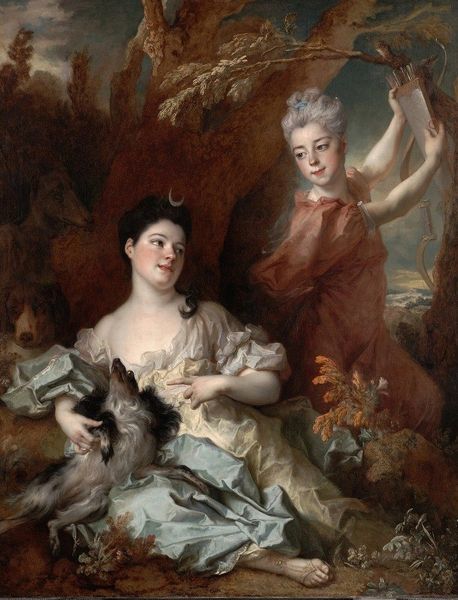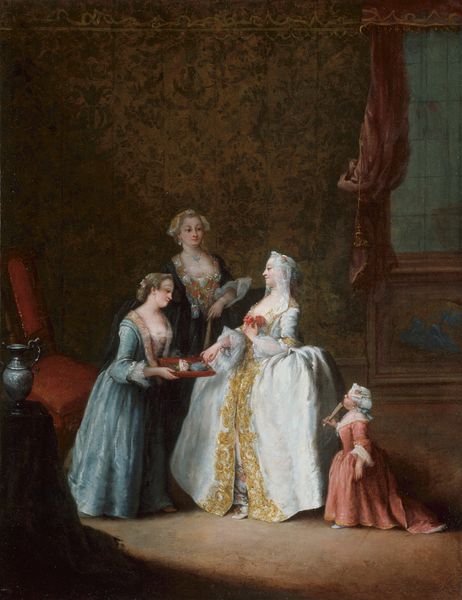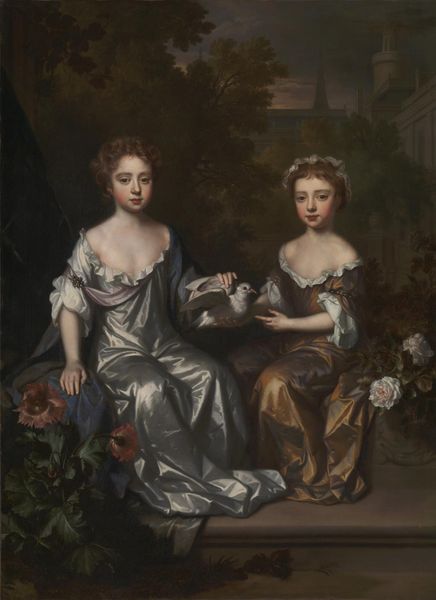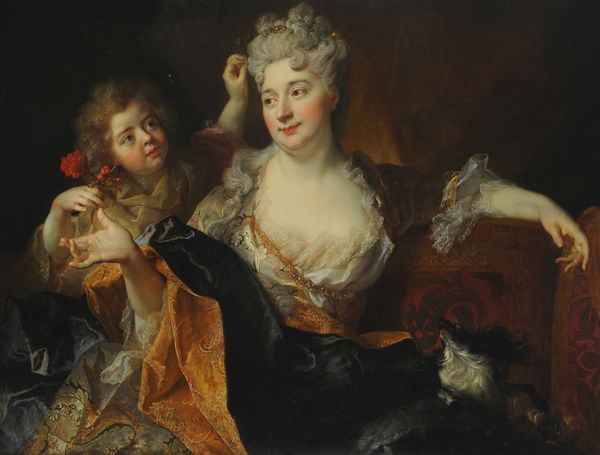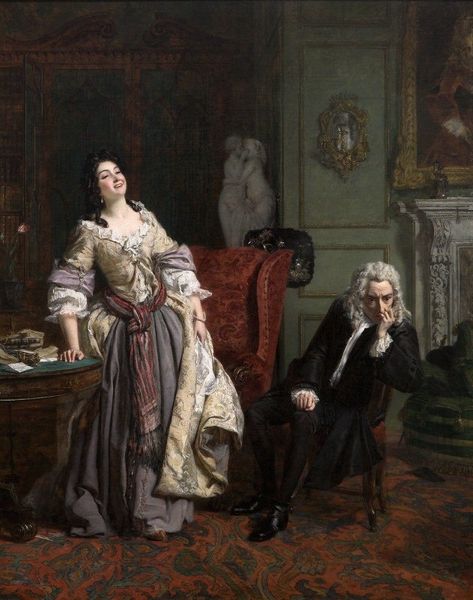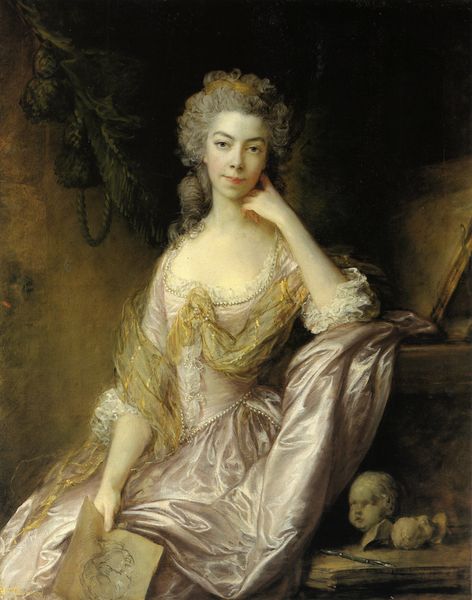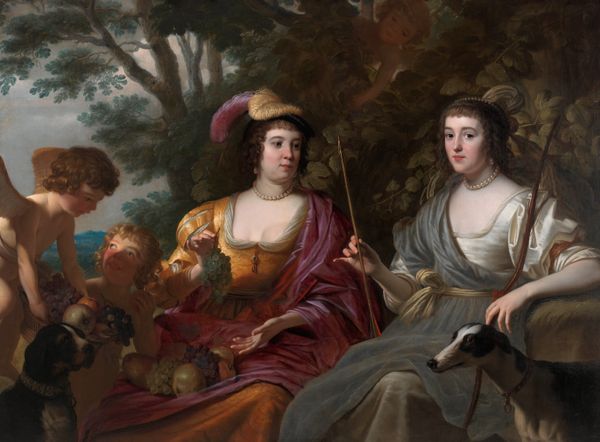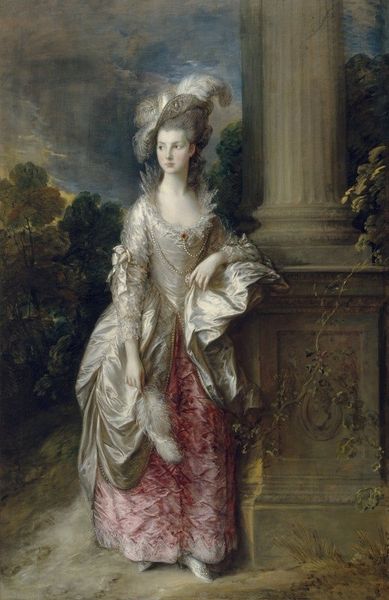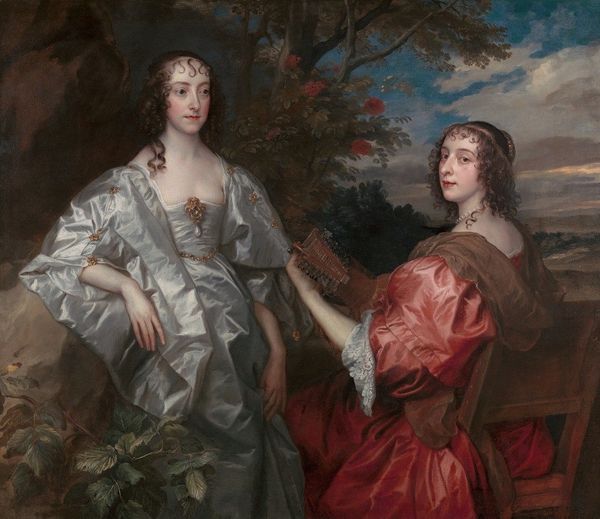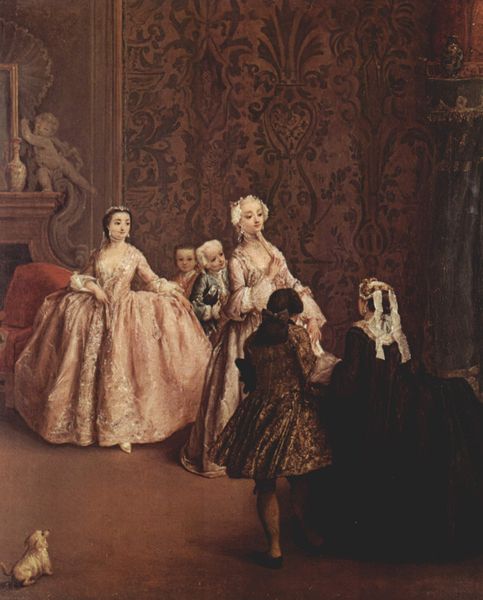
Copyright: Public Domain: Artvee
Editor: Here we have "The Ladies Waldegrave," painted in 1780 by Joshua Reynolds, using oil on canvas. It feels staged, almost theatrical, doesn’t it? What strikes you when you look at it? Curator: The Ladies Waldegrave appear almost like figures in a play, frozen in an eternal tableau of domestic gentility. The subdued palette, all creams and greys, with those audacious wigs...it hints at both wealth and an underlying… emptiness, perhaps? Reynolds was obsessed with elevating portraiture to the level of history painting. Do you think he succeeded here? Editor: I see what you mean about the emptiness, despite all the finery. But history painting? Is embroidering and writing letters really the stuff of legend? Curator: Ah, but consider the context! Reynolds believed the ideal artist could "read" character and capture lasting truths. Perhaps he’s making a comment on the lives these women lead, bound by social expectations and domestic duties. Isn’t there something heroic, even if quietly so, in upholding those expectations? What do you make of the arrangement of figures? The gazes? Editor: It's like they are trapped, literally and figuratively, within the frame, but connected to one another. Like, all they have is one another...almost sad. I had not thought about it that way. Curator: Exactly! There is so much going on beneath the surface. Now you see Reynolds at play in this work! Editor: I definitely have a richer sense of the portrait now. I can see the commentary he was trying to convey beyond the clothes and wigs. Curator: Yes. Seeing is really so much about looking *through* those wigs!
Comments
No comments
Be the first to comment and join the conversation on the ultimate creative platform.

